The following article was first seen in the Thursday, May 24, 1962 edition of the “OJAI VALLEY NEWS” on the “OPINION PAGE” (Page A-2). It is reprinted here with their permission. It was an “EDITORIAL”, and the author is unknown.
Our problem: growth
A recent population analysis issued by the Ventura county planning staff revealed that the “Ojai planning area,” comprising Ojai, Meiners Oaks and Oak View, was growing slightly faster in the period April 1, 1961 – April 1, 1962, than the county average and about twice the rate of growth of the State of California.
Figures showed the county rate of growth as just over seven percent. This compares with an average of six percent the previous year. This is in line with recently-released statistics which told that Ventura had become the second-fastest growing county in the Los Angeles complex, second only to Orange. Its jump of over one percent in a year presages an increase year by year.
In the Ojai planning area the trend was slightly higher than the county average. We inched upwards to an eight-plus population increase this year. With plenty of land and water available, no slackening in this trend is in sight. No impenetrable barricades will be stretched across Highway 399 on the Arnaz grad or across other access, the Upper Ojai. Employees of the industries moving into the Tri-Cities, Oxnard, Thousand Oaks area will drive here some Sunday afternoon, fall in love with the valley and buy a home. Father will join the roughly 50 percent of the present commuters who live here and work elsewhere.
Another pertinent statistic came to light in the county survey. The highest rate of growth in the county was in the Simi planning area — a remarkable 27 percent increase. Second was Camarillo with 15 percent. Ojai was third at eight-plus.
A look at a county map at this point is revealing. Growth, which has been coming in the past from commuters who work in the Ventura area, will soon make a pincer movement into the valley via the Upper Ojai. Planners count on the development of the large ranches of the Casitas lake perimeter, but the Upper Ojai and even East Ojai’s proximity to the 27 percent increase of the planning area is even more startling. This is where growth is spilling over from the San Fernando valley coming this way along a Santa Susana-Simi-Moorpark — Santa Paula line.
Incidentally, great efforts are being made in Santa Paula to obtain industries. And, down the road a few miles in the Tri-Cities of El Rio, Montalvo and Saticoy, vast acreages are zoned industrial. Recently a 133 acre piece was sold to heavy industry.
Far from Ojai? Not really. From the Tri-Cities it is just as close to Ojai via Santa Paula as it is through Ventura. The same goes for Fillmore, which is due for San Fernando growth.
So here is our problem: proximity to growth. And, to a certain extent the cause of our present problems, for the valley has been growing steadily for a number of years. But the rate is accelerating — probably never to runaway proportions — but nevertheless as consistent as the rising sun. The population should inexorably double in ten years.
So, the future is already upon us. What to do about it?
The obvious answer: plan. The not-so-obvious answer: make decisions.
And, we mean make decisions now. Every decision deferred now means time that cannot be retrieved . . . . more pressure on the day when action is overdue, when action will be forced under pressure, perhaps under controversy, and always under haste, and extra expense.
Honestly now, wouldn’t our valley be a better place to live — a better planned community, if governmental bodies had been ready for growth, such as subdivisions, then years ago.
Only fast, massive, intelligent action on Ojai’s master plan, and by the county on the unincorporated sections of the valley (which are exceptionally vulnerable) can save the valley from a fate it does not want — or deserve.
Hard work and no pay reward a vital job
The following article was first printed in the Wednesday, July 28, 1993 edition of the “Ojai Valley News” on Page A-1.
Hard work and no pay reward a vital job
By
Mike Palmer
Needed are a few good men, any age, any occupation (even attorneys or bankers), on-call 24 hours a day, must provide their own equipment and be willing to work for no pay at all hours of the day or night.
Add to these requirements months of training, an extensive background check, the need for a unanimous vote of 20 other team members to join and you have the requirements for membership in one of Ojai’s most select groups — The Upper Ojai Team of Ventura County Search and Rescue.
According to team member Tom Farmer, “You have to be 100 percent committed. You have to be ready to instantly drop what you are doing and go out on a rescue. It takes strong family support.”
He said the hours required of team members may vary from just a few to over 100 per month depending on need.
Farmer went on eight rescues during five months and participated in many training exercises before he was voted team membership, he said.
Any team member has a veto power regarding new members as does the Ventura County Sheriff’s Department.
The Upper Ojai Team is composed of different occupations. Some of these include a banker (Farmer), an attorney, a medical technician, a landscaper, several ranchers, an insurance broker and numerous others. Ages vary from 20 to 70 in the Upper Ojai Team.
Although the team is currently all male, it has had female members. All are welcome that can meet the rigorous physical requirements for membership, according to Farmer.
The team’s last rescue involved an 18-year-old woman, lost while hiking in Santa Paula Canyon. The search started at 9 p.m. and she was found at 2 a.m. the next day, he said.
Lost hikers, plane crashes and missing children are the most common call-outs, according to Farmer.
Although each of the three Ventura County Search and Rescue mountain teams are somewhat autonomous, they are under the over-all direction of the sheriff’s Lt. Arv Wells in Camarillo.
All calls for search and rescue in the back country go to Wells or his assistant, and they make the decision whether to call out one of the teams.
All team members carry beepers and equipment 24 hours a day, seven days a week, Farmer said.
Wells said, “Most calls come from various watch commanders around the county.
“Our decision to respond when a person is two hours overdue, depends on many factors. The age, back country experience and weather will control if an immediate response is indicated.
“If there is any doubt, we would rather respond and cancel a search after someone shows-up, rather than wait.”
Wells supervises eight search and rescue teams and three helicopter units county-wide.
In addition to three mountain teams, there is a search dog team, an underwater team, a medical team, a mounted posse and an administrative support team.
He said the 180 volunteers who comprise the eight teams save the county $500,000 annually. Wells said most team members provide all their own equipment and devote hundreds of hours to training and rescues, all for the “self-satisfaction of helping others in adverse conditions and some times saving lives.”
Farmer said he got involved after he witnessed first-hand the many hours devoted by the team when his son, Troy, was lost in the back country last December.
Although, Troy subsequently came out without help, Farmer said, “I learned to appreciate what a victim’s family goes through. That is when I decided that I wanted to help.”
Farmer said the Upper Ojai Team is selling t-shirts to help finance the purchase of some new equipment. Shirts may be purchased for $12 at the Ojai Valley Bank, 1207 Maricopa Highway, Ojai.
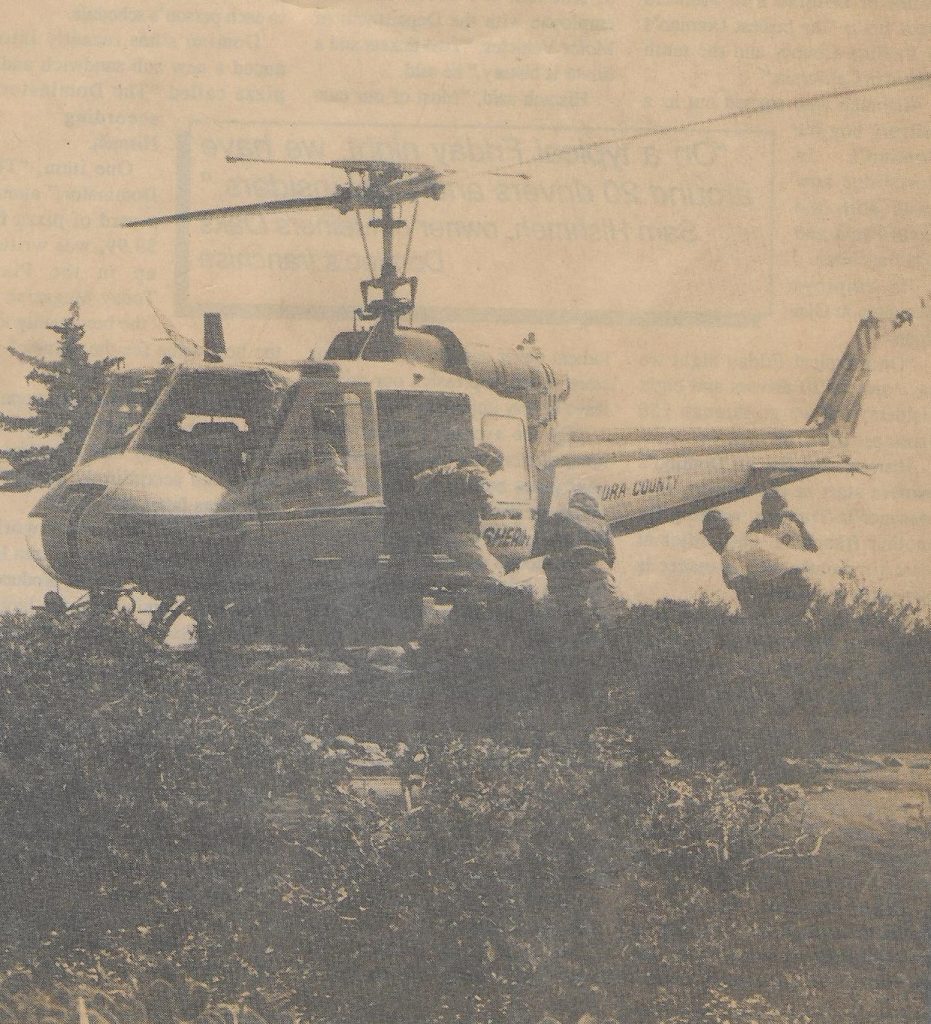
Memories of times before freeways recall life as simple, safe
The following article first appeared in the Wednesday, May 17, 1995 edition of the “Ojai Valley News” on Page A-8. It is reprinted here with their permission. The author, Lee Strohbehn, was a longtime dentist with a practice in the Ojai Valley. The photo of Dr. Storhbehn was added by the “Ojai Valley Museum”.
The Golden Years
Memories of times before freeways recall life as simple, safe
by
Lee Strohbehn
Before freeways, was it only the exuberance and vitality of spirit of young parents that drew us to downtown L.A.?
Some of the fondest memories I have are those when my wife and I took our family to the Dorothy Chandler Pavilion. How well I remember Richard Kiley and the Man of La Mancha at the Mark Taper Forum and Ingrid Bergman at the Amanson Theatre.
And the concerts — we were there to see Zubin Meta conduct and to hear the L.A. Phiharmonic. And afterward to take the family to dinner right there at the Music Center, or to a favorite, Edwards Steak House on Alvarado St.
Let’s do lunch
And then there were trips to the Hollywood Bowl. What a delight, to take a lunch and sit high up under the stars to listen to programs which, as a farm-bred Iowa boy, I never thought I or my family could be part.
As parents, we had a feeling of fulfillment to realize that our three children enjoyed these experiences as much as we did and that we could provide them.
Life was affordable
Admission prices at that time seemed affordable. Nor did I have the feeling the environment was unsafe, or that the drive home late at night was an ordeal.
How times change! How could I afford those adventures now for five people?
And if Edwards Steak House were still there, I wouldn’t dare take my family to a restaurant on Alvarado. Somehow to drive the freeways, especially at night, is daunting to me now.
As our family grew older and we began to rely more on local entertainment events, Frank Salazar came along and the Ventura County Symphony orchestra was born. We subscribed immediately as charter members.
How delightful it was to recognize Ojai’s Frank Roller and his violin, Dorothea Walker and her cello, and Lavonne Theriault and her drums down there among all the other Ventura County musicians. We truly felt linked to beautiful programs.
I’m one of those untalented people who knows nothing about music but enjoys it endlessly. There are times when I lose myself, when I’m oblivious to everything around me and I feel one with a composer who has struck the chords I like. I cherish those moments.
Oldies missed
I confess that I was confused when Maestro Salazar left the orchestra. I had, in a sense, matured with him musically and I must say I miss him. I understand there has been a parallel experience for those audiences who have been attending performances of the Conejo Valley Symphony Orchestra.
Now those two orchestras are undergoing further transition. The apparent objective of those behind the podiums is to produce a “World Class” orchestra by combining talent and weeding out those who do not perform to and exclusive standard. I have heard that they hope to attract excellence from outside the area.
My limited knowledge of music doesn’t allow me to discriminate the finer levels of quality. I always enjoyed Frank Roller’s violin but I seriously doubt that his talent would have allowed him to survive the judgments that must be made to seat one orchestra instead of two in Ventura County.
I love Ojai’s summer band concerts on Wednesday nights in Libbey Park. I like the sound and revel in the incomparable social ambiance.
Memories linger
I used to feel something akin to that when the Ventura County Symphony was young, especially when I could bond with Roller’s violin. Although Frank isn’t with us now, his memory still lingers and epitomizes a homegrown spirit I miss in the Orchestra.
“World Class,” if it means change in community participation, simply doesn’t mean that much to me. I’m sorry to see the Ventura County Symphony Orchestra elevated to a class conscious status beyond my ability to enjoy or afford.
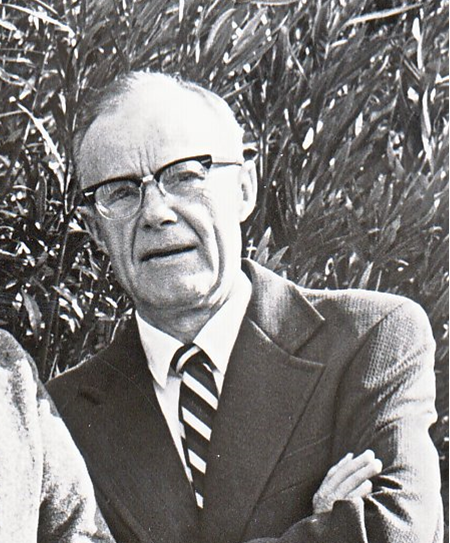
Volunteer team is dedicated to helping Valley neighbors
The following article first appeared in the Ojai Valley News on Wednesday, October 21, 1992. It is reprinted here with their permission.
Volunteer team is dedicated to helping Valley neighbors
by
CANDACE LAWSON
OJAI VALLEY NEWS
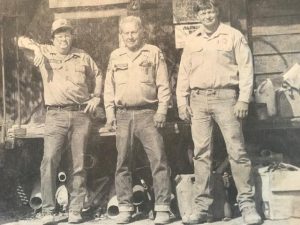
Since the 1950’s, Upper Ojai rancher Carl Hofmeister and a group of Valley volunteers have worked as partners with the Sheriff’s Department in an important capacity — as a trained search and rescue team that regularly finds lost hikers, saves victims of hard to reach accidents, and plucks drowning or stranded people from raging rivers or flood waters.
Hofmeister, a man of few, but well chosen, words only smiles and shakes his head when you ask him how long he’s been doing this kind of thing. Hofmeister organized the group “many years ago,” even before the Sheriff’s Department became involved, to help his fellow Valley residents. The Valley was less populated and more isolated at that time.
“If someone gets hurt, you can’t run off and leave them, you have to help them. It gets in your blood,” Hofmeister, the Captain of the Upper Ojai Search and Rescue team said.
Today the team is officially organized through the Sheriff’s Department, who supplies them with rescue equipment, including two trucks kept at Hofmeister’s Upper Ojai ranch, and monthly training.
The 18-member team is called in by the Sheriff’s Department when special rescue skills are required. Some examples of their work include being called if a car is over the side of a mountain road, if an organized search is required to find a lost or injured hiker, if a victim or body must be recovered and transported out of a remote location, either by helicopter or overland, or if a plane wreck must be located.
The Upper Ojai team is one of four in the county. Other squads include the Fillmore, East Valley and Dive teams. The Upper Ojai team is traditionally the busiest, with the Los Padres mountains close by. Hofmeister says the team can get called up as often as two or three times each month. But in slower times, for instance during the summer, calls can be fewer and further between.
Members’ training includes CPR and first aid. Some of the members, who come from all walks of life including ranchers, optometrists, attorneys, and county parks employees, are trained as emergency medical technicians.
But they all receive special training — from how to tie a proper knot to rigging pulley systems to lift someone out of a tight situation.
Drew Mashburn has been on the team for just over a year, and has been impressed with how much there is to learn. He says he’s just now getting more comfortable with his training and skills.
Mashburn said the team’s most common rescue results from people just not being prepared when they go out into the wilderness.
“Many times people bring these things on themselves. They don’t let people know where they are going, and they don’t wear proper clothing and get caught in inclement weather,” Mashburn said. “Even in Ojai in August, you should bring a windbreaker when you go hiking — you never know when you could fall and break a leg and get stuck overnight in bad weather.”
Many people don’t even realize the team exists, or that it’s a strictly volunteer enterprise, Mashburn said. But the team is now seeking community support so they can make an important capital purchase — beepers to notify members when they need to assemble for an emergency response.
“We are trying to upgrade our unit, and one of our biggest problems is slow response time,” Jim Wright, a 23-year veteran of the team said.
“When we have an emergency, the Sheriff’s department calls Carl, and then he goes through the phone list and calls everyone else. Than can take 20 or 30 minutes, but if we had pagers that went off we could respond immediately,” Wright said.
The pagers have been priced at about $2,500. And to help raise the funds in these days of tight county budgets, the Search and Rescue Team is hosting a benefit barbeque at the Upper Ojai’s Summit School this Saturday.
The $12 donation gets you top-sirloin steak with a soda and all the trimmings. Children under 12 will be served hot dogs and hamburgers free of charge.
For tickets and information call 646-2496 or 525-7943.
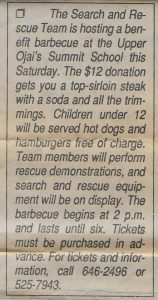
Reminiscences of Early Ojai (No. 3)
The following article was written by Howard Bald and appeared in the April 25, 1973 edition of the Ojai Valley News. It is reprinted here with their permission. Photos have been added by the Ojai Valley Museum. Bald used the same title for his many articles. So the Ojai Valley Museum has added “(No. 3)” to this one.
Reminiscences of Early Ojai (No. 3)
by
Howard Bald
Presumably El Toro Road in the Arbolada got its name from the slaughter house that once existed in that vicinity just off Foothills Road. When people began to build along Foothills Road, the offensive slaughter house was moved to Del Norte Road across from the cemetery. All meat for the valley was dressed at the slaughter house.
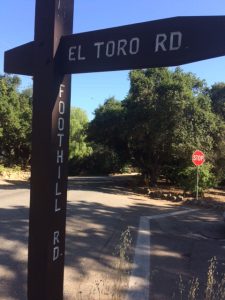
Three times a week the meat wagon, a covered wagon drawn by two horses, made the round of the east end of the valley, stopping at all the homes and ranches in that vicinity. Among them were W.C. Hendrickson, Fred Udhall, Pierpont Cottages, Dr. Hollingsworth, the Lords (parents of Denham Lord), A.L. Dodge, Thacher School, the McAndrews, E.S. Thacher and the Jim Chapmans.
On the alternate day the wagon went to the Upper Ojai, and among those served were the Dennisons, Clarks, Hobarts, Thompsons, Robinsons, MacGuires, Grays, Burnells, Pinkertons and Brackens. There were doubtless others.
Annie Pinkerton always had a nice piece of pie for the meat man. Houk had a very good butcher, but he couldn’t resist Jimmie Braken’s wine at the upper end of his route. Fred Houk tells me that his father used to send him along to drive the team home when he had imbibed too heavily.
What I remember in particular was the butcher letting the wagon tail gate down (it served as a cutting and packaging block) and in the summer the flies swarming in. When the customer was served, the butcher with his flour sack apron would swish the flies away, then hurriedly close the end gate.
All that I remember about the price of meat was that 15 cents worth of round steak was sufficient for a family of four, with a tidbit for the family dog.
As well as I can remember, there was no regular dairy with milk delivery until about 1915-18. But a great many people had a family cow, sometimes two or three, and they would sell to neighbors a quart or so now and then. When there was a surplus of milk, some would make butter and exchange it for groceries. Since the churning and working of the butter was by hand, that is, separating the milk from the butter and molding it, and there was no refrigeration, the product very quickly became rancid. And of course, the milk would sour very readily. Among those that I delivered to were the Pratts, Libbeys and Robertsons.
Certain townspeople were essentially the same as of today. Now as I drive over those confusing roads, my wife wonders how I know where I am going. I reply that considering the dark nights I combed the park for a stray cow, I should know my way about.
And what I remember about sanitation, or lack of sanitation, in the production and handling of milk and butter would fill quite a volume. I am sure much of the same would apply to meat. I was familiar with that business for several years before the Houks came to Nordhoff and installed refrigeration.
The grocer did not dispense eggs in nice, clean cartons as we know them. Generally, the eggs were a week or more in accumulating. And generally they were fertile. There was no candling, so not infrequently an egg on being opened would reveal an embryo — not very appetizing.
One of the town rowdies could crow like a rooster, and in the middle of the night would get the many, many neighborhood roosters started to crowing, thus setting off a general chorus. Naturally he was not popular with the neighbors.
Early Days in Upper Ojai
The [Upper] Ojai Valley by Lowell Mason Hardison
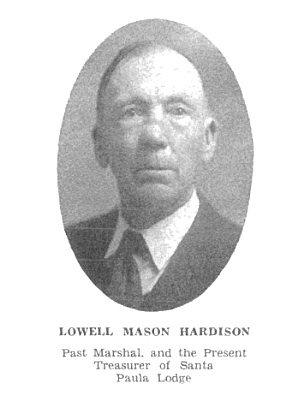 Lowell Mason Hardison was an early settler in the Upper Ojai Valley. He was born in Caribou, Maine, on August 25, 1852. Mr. Hardison was a businessman in Caribou for a number of years; he also served as deputy sheriff and town treasurer. Later, he went to Pennsylvania where he was employed in the oil business. He moved to Santa Paula in 1883, where he became a successful rancher.
Lowell Mason Hardison was an early settler in the Upper Ojai Valley. He was born in Caribou, Maine, on August 25, 1852. Mr. Hardison was a businessman in Caribou for a number of years; he also served as deputy sheriff and town treasurer. Later, he went to Pennsylvania where he was employed in the oil business. He moved to Santa Paula in 1883, where he became a successful rancher.
Lowell Hardison’s cousin was the well-known Santa Paula oilman Wallace Hardison, who founded the Union Oil Company with Thomas Bard and Lyman Stewart.
What follows is a paper written by Lowell Hardison on the early history of the Upper Ojai Valley. The paper was donated to the Ojai Valley Museum by Ojai resident Terry Hill.
*****************
I have been requested to write something of a historical nature for the Pioneer Section of the Ebell Club of Santa Paula. The history of the pioneering of California and Ventura County has been well written by persons more competent than I. What can I write that will be of interest to you who are making a study of this subject? The days of the pioneers have past. Why did people leave the East to come to this country of deserts, privations, and hardships? I will answer for myself as an example.
My first recollections of hearing the name California was when I was about eight years of age. Father and another man were telling about what befell a man who went to California a few years before. They knew his folks.
Just over the boundary line that separates the State of Maine from New Brunswick is a section of country they call California. I have been told that it was so called because so many of its menfolks had gone to that state during the mining excitement of 1849. The hardy men of Maine and the British provinces were the kind of material for pioneers to go into a new country and subdue it in spite of the obstacles of nature placed as barriers to impede their progress; such as great mountain ranges, vast expanses of barren desert without food or water, harassed by roving bands of hostile Indians, and bad white men that stole their cattle and horses.
It was about one of a party of those who had left California, New Brunswick, for California, U.S.A., that I heard the harrowing story that I shall always remember. This man they were telling about had heard the stories told about the atrocities the Indians inflicted on captives. He said, “I am not afraid of Indians. I am going to shoot the first one I see.” He did. The next morning their wagon train was surrounded by a large number of Indians in war paint who demanded the man who did the shooting be given up for punishment. Being so greatly outnumbered, they complied in order to save the lives of the entire party. The Indians tied him up and commenced at his toes and skinned him alive, while the others had to look on.
From that time, for several years, like most boys who had any ambition, I had daydreams of going to California to mine for gold and fight Indians. I read many books written about California such as Richard Dana’s “Two Years Before the Mast”, Fremont and Kit Carson stories, and the Oregon trail. The time came when I had to make a change of climate, as my health was such that I could not stand the cold winters of Maine. We decided to go to California, the land of my early dreams.
On my arrival in California, I met many people who came here during the gold rush period and had followed mining for many years since. At Placerita Canyon, a few miles above Newhall, I met a man who came around Cape Horn in the second ship that General Veazyie sent out from Bangor, Maine, for California. He knew my nearest neighbor who was to have sailed on the same ship with him, but owing to sickness, was left behind. This man, Mr. Drinkwater, showed me how to pan for placer gold. I bought a miner’s pan and a horn spoon for an outfit. As soon as I got settled and was able to do so, I prospected in the gulches on the south side of San Cayetano and Topa Topa mountains. I had not yet learned that it was not of much use to look for gold in sandstone formation.
I had heard the tales told by old timers of the lost Padre and of other mines, and had seen old long-whiskered miners settle their store bills at Scotts or Cohens by pouring fine gold out of buzzard quills onto small balances that nearly every trader kept for that purpose.
In prospecting I saw many strange things. On the east side of the Ireland (or Harvey) Canyon a short distance below where it leaves the wooded glen was a small Indian burial ground. It had headstones and was covered by a dense growth of brush. Dr. Stephen Bowers who had made extensive researches in archeology for the National Museum said it was the only case he had found where they buried their dead in asphalt.
The [Upper] Ojai Valley and the mountains on either side, as late as when I came here, were a hunter’s paradise. I was told by a man that was one of the party hunting with Thomas R. Bard, when he first came to the country, that they camped one night on the creek not far from the Santa Paula sulphur springs, they were disturbed in their slumbers by a grizzly bear turning Mr. Bard over with his paw. They yelled so loudly that the bear left in a hurry. They surmised that the bear found that he had disturbed a new specie of animal that he had better leave alone. Wild hogs were quite plentiful. Their tracks could be seen the road nearly every day. They were very wild and swift of foot. Hunters did not bother them as they took to the thick brush at the slightest noise. No dog could drive them out. The flesh of the wild hog is strong and oily. They produce no lard. George Bay captured several small pigs one summer and fed them on grain. The flesh was too strong for white men to eat. One large boar was monarch of the Sulphur Mountain; he would clean up a pack of dogs in short order. The nimrods and mighty hunters gave him a wide berth. Rabbits, quail, doves, and wild pigeons in the winter time were plentiful; trout abounded in the streams that emptied into the Santa Paula Creek.
But few people know of the fertile soil, fine scenery, or delightful climate of this section of our county. I lived in it for many years and had great faith that it would be discovered sometime by real estate agents, divided into small holdings, and sold to those able to build fine homes and develop the land so it would become a paradise. I believe it has the best climate of any country for elderly people in which to spend their declining years. Mr. M. C. Harvey has shown what hard work can do. He has transformed a rough canyon into a place of beauty and delight. If the ghost of the departed Indians should ever return that once roamed over the hills, they would think they had found the happy hunting ground and put up a stiff fight against being thrown out.
About halfway up the Sisar Canyon, well up on the side, I discovered an old road that, by its width, must have been used as a wagon road. It was several hundred feet in length and covered with a heavy growth of brush. I thought that it must lead to one of those lost mines. I searched for several days to find the beginning or the end of the road without success. I learned later that some of the timbers used in building the od Mission at Ventura were brought down this canyon. On the west side near the mouth, I found an old camping ground, or should I say a picnic ground, for by the shells that I uncovered, it must have been a meeting place for a clambake. Some of the shells were very old, no doubt, but the creek ran much higher on the bank than it does now, and flowed through the Ojai Valley. We have the old channels of creeks as evidence. In blasting out a large boulder, I found underneath a fine mortar-pestle, which I think you will find in the archives of this Society. On the Gibson and Bracking places, evidence of large Indian campgrounds could be traced; many stone implements were uncovered in plowing the fields. In the side of the bank of an old creek bed, on land that I once owned, was a cave high enough for a man to stand up in, and large enough to house quite a family. I think the occupants must have left in a hurry and had no time to remove their household furniture, as all was broken. Perhaps it was a tribe of Matilija Indians that wiped out the Indians of the upper Ojai Valley. Who knows?
As a reminder to you of the flight of time, I will try to record the names of the people who owned places between the Blanchard and Bradley Mill, and the head of the grade to Ojai, or Nordhoff as it was called at that time (as far as I can remember):
First, Harrison Crumrine, rancher and schoolteacher.
Sam Todd, a friend in the time of trouble. He lived alone after his mother passed away. The place is well known as the Say place.
Washington Rhodes, orchard and bees. He always stayed drunk as long as the east wind blew. He sold out to W.L. Hardison, now owned by J.N. Proctor.
Julio Peralto, Lectra Briggs place. He was quite extensively engaged in the cattle business. He had a large family.
John Mears, a native of Ireland. He had several large bands of sheep. The place is now owned by the Harveys.
George Smith, a one-armed Englishman. He came around the Horn. He was born not far from the Tower of London. (Place now owned by Anlauf.)
Alex Farrell lived at the foot of the Deitz Hill. He kept bees and had a few lime trees. Limes were a luxury at that time.
Skaggs, now owned by Doheny. The gate is well guarded; no trespassing is allowed.
Above the Skaggs place on the Santa Paula Creek, Alexander bee man.
Fred Richardson above No. 6 oil well.
Newcomb J. Ireland, at the mouth of the Ireland canyon, a millwright and bee man. Came here from Kansas.
George Bay, the first place on top of the hill at upper Ojai. He did some farming and kept bees. Place now owned by oil company.
The next place west, Joe Specht, farmer, born at sea of German parents. Place now owned by Davy.
James Bracking, farmer and wine maker. His farm was used as a camp ground for many Indians indicated by the marks left. He was born near the River Shannon in Ireland within sight of an old Roman fort. The place is now owned by the oil company.
The next west is Thomas Gray and sisters. They are still on the place.
John Thompson, farm and orchard, native of Ireland; now the Tucker place.
Thomas Clark, farming and wine making.
Robert Gibson, farming, cattle and horses, a native of Scotland, who came around the Horn with his family in a sailing vessel, was killed by being thrown out of a spring wagon by a runaway team.
John Pinkerson, farming a fruit, came from the North of Ireland. Al Drown now owns the place. [Pinkerton was one of the first in upper Ojai to buy land from Thomas Bard.]
Next west, Proctor, and Englishman. Tom McGuire is the present owner.
Captain Robinson, farmer, native of Maine. Place now owned by Barnard.
Joseph Hobard, farming, fruit and cattle, native of Massachusetts. He was one of the Vigilantes that ran the gamblers and bad men out of San Francisco in 1856. The place now owned by M.H. Butcher.
Henry Dennison, farmer and horticulturist. He said that his ______ took a prominent part in rounding up Napoleion Bonaparte after he had overran nearly all of Europe. His sons own the place.
I believe that the Dennisons and the Grays are the only ones left in the [upper] Ojai Valley of the original settlers who live on the same farm they did in 1883.
Wishing happiness and long lives to the people of the Ojai Valley, that beautiful land of sunshine, I will close
L.M. Hardison
October 1, 1936
